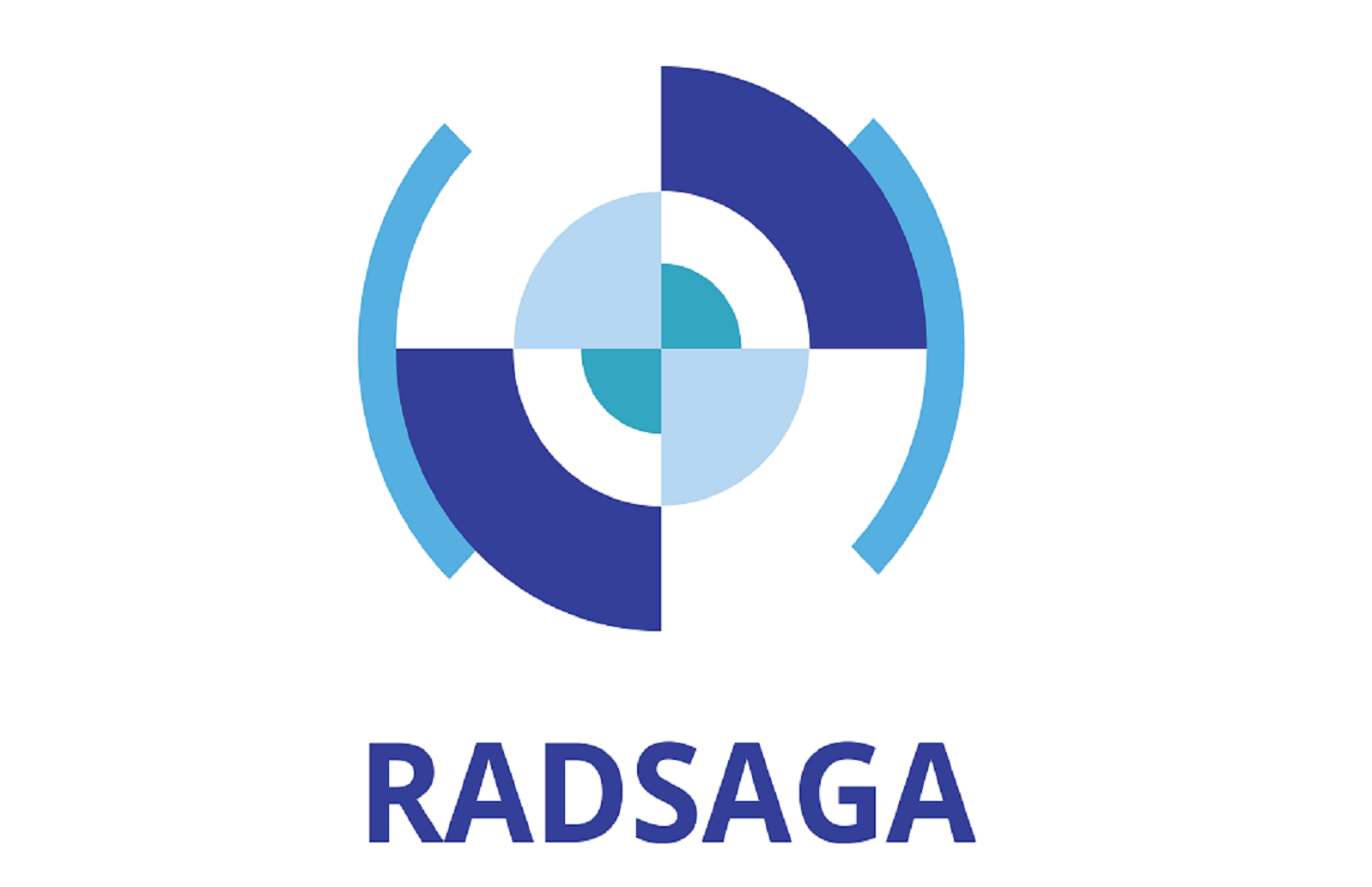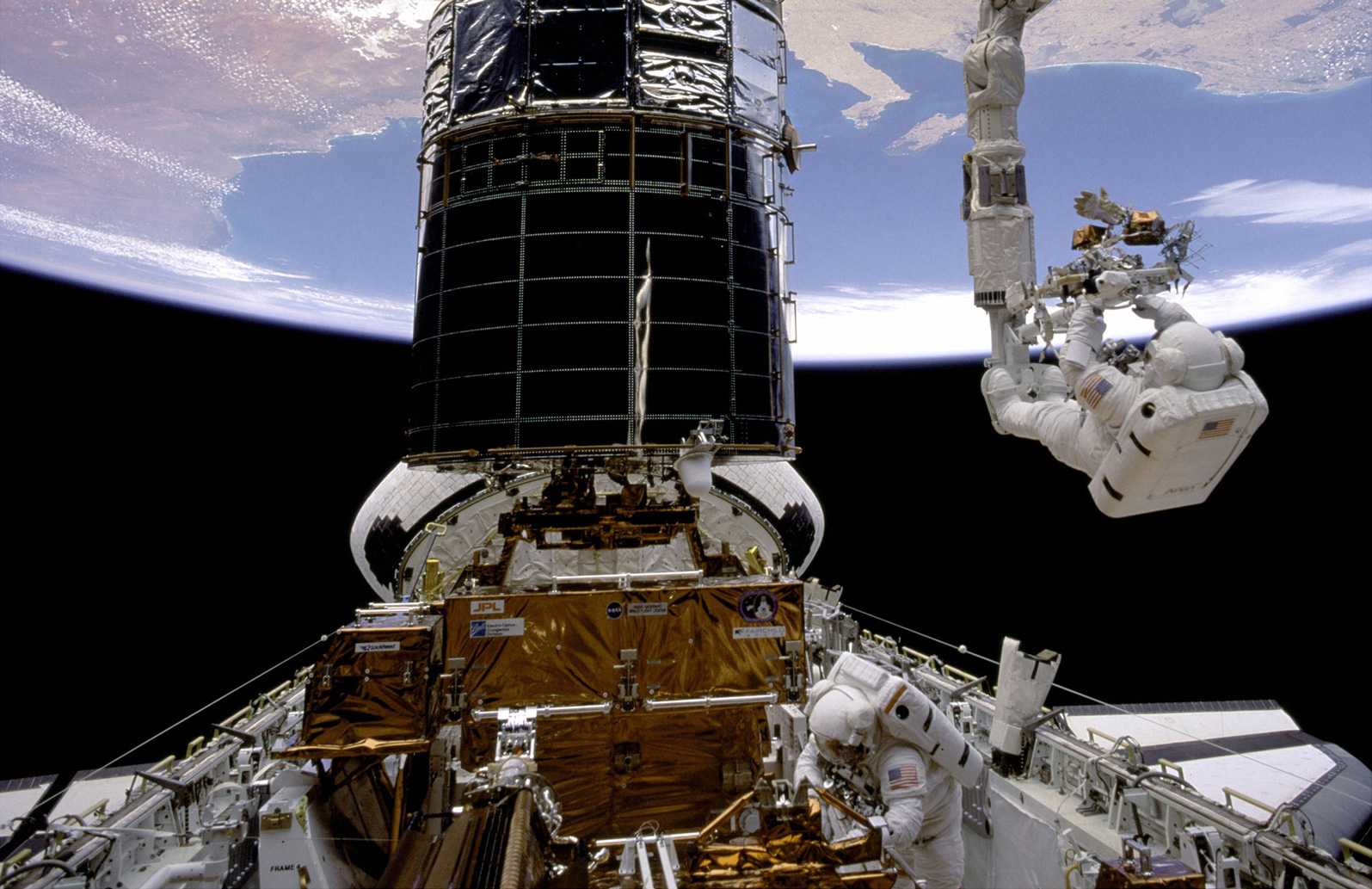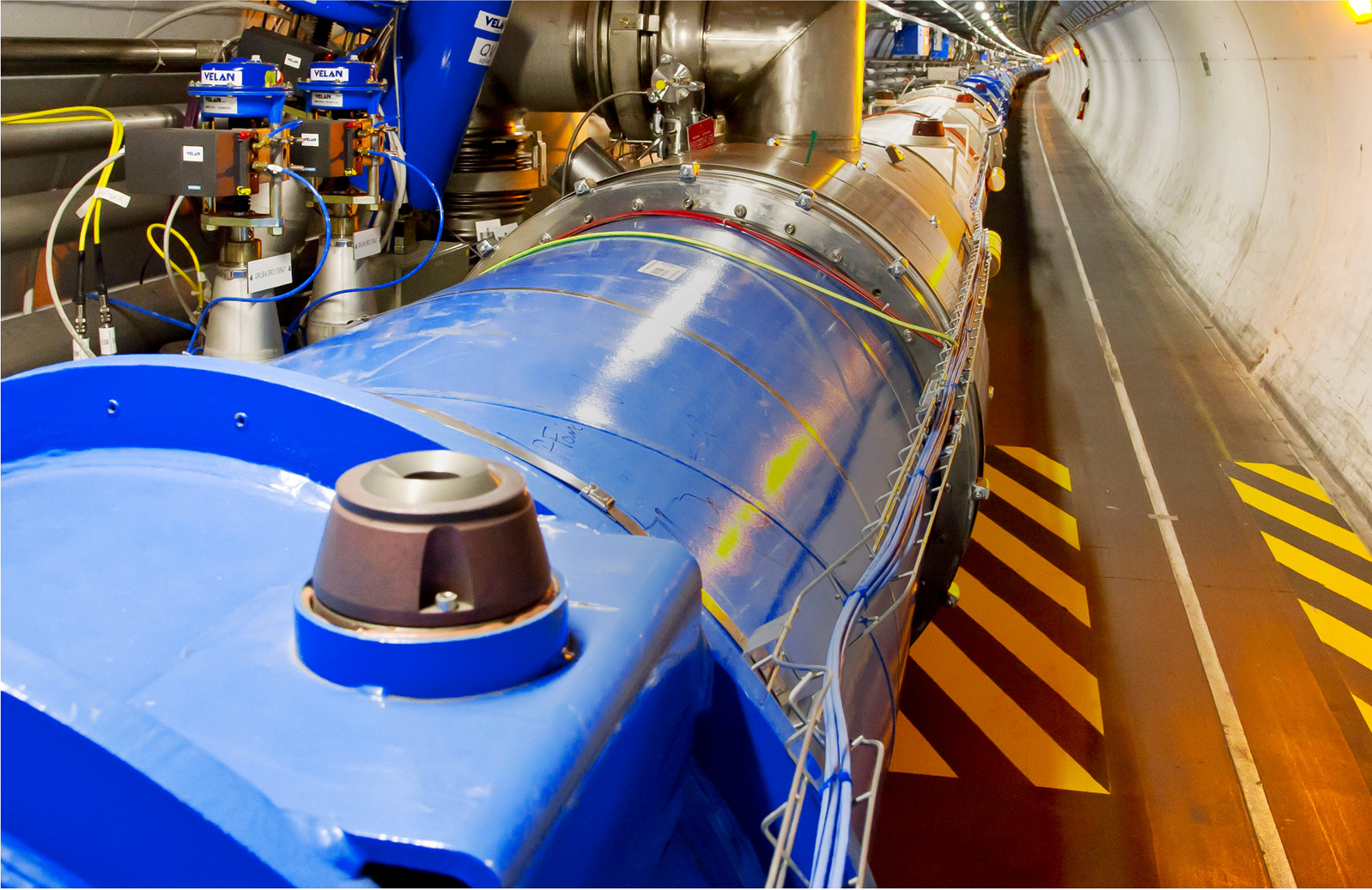ESR Positions
The 15 RADSAGA Early Stage Researchers (ESRs) have recruited by the network beneficiaries and are participating in interdisciplinary and intersectoral secondments in other network parterns.
Meet our ESRs through their profile pages!
| Name | Subject | Host Institute | |
|---|---|---|---|
| ESR 01 WP1 |
Correlations of direct ionisation effects from low-E protons to energetic heavy ions |
Learn more | |
| ESR 02 WP1 | Dosimetry methodologies in the context of radiation effects in emerging technologies and mixed field environments | Learn more | |
| ESR 03 WP1 | Radiation environment description at an energy deposition level | ||
| ESR 04 WP1 | Emerging Radiation Effects: Singly charged particles and innovative materials | Learn more | |
| ESR 05 WP1 | A flexible SRAM based SEE Radiation Monitor |
|
Learn more |
| ESR 06 WP2 | Integrated Time-based Signal Processing Circuits for Harsh Radiation Environments | ||
| ESR 07 WP2 | Coupled radiation effects on emerging power devices | Learn more | |
| ESR 08 WP2 | Coupled constraints on complex digital integrated circuits | Learn more | |
| ESR 09 WP2 | Predictive tools and "Radiation Hardening By Design" (RHBD) for SEU and SET in digital circuits | Learn more | |
| ESR 10 WP2 | Predictive tools and "Radiation Hardening By Design" (RHBD) - SEL and Temperature Effects | Learn more | |
| ESR 11 WP2 | Radiation tolerant CMOS imager | ||
| ESR 12 WP3 | System-In-Package (SiP) radiation qualification requirements | Learn more | |
| ESR 13 WP3 | Bridging methodology from component to system-level for the assessment of coupled radiation and degradation constraints in digital systems | Learn more | |
| ESR 14 WP3 | Radiation tolerant communication links to be used for distributed systems and mixed-field radiation environments | Learn more | |
| ESR 15 WP4 | Relevance, Guidelines & Tools for rad-hard design and radiation testing of components and systems in complex environments |
ESR 01 WP1 Subject: Correlations of direct ionisation effects from low-E protons to energetic heavy ions
The objective of this PhD project is to study direct ionisation effects caused by low-energy protons as well as energetic heavy ions. Recent studies have shown that not only heavy ions, but also protons are able to create SEUs via direct ionization when their ionization is at the highest. In fact, for space systems low-E proton sensitivity is a major reliability concern since their flux is large at low Earth orbits. Also at ground level, low-E singly charged particles such as protons or muons could have a significant impact on the SEU rate. Using an innovative narrow-FWHM (Full-Width at Half Maximum) technique, low energy proton beams with extremely well defined energy distributions can be produced at RADEF. This technique can be extended to heavier ions, up to nitrogen, allowing one to find correlations for the direct ionization effects created by ions having the same LET but different masses. The findings of this ESR will – in close collaboration with the rest of the WP1 projects - be essential in further understanding the low-E proton and muon sensitivity of modern components and placing it in the context of higher LET particles. In addition, results derived from it will contribute to establish test guidelines that include these particles in the qualification process, therefore providing decisive input to ESR15.
Beneficiary: University of Jyväskylä (Finland)
Supervision: Research Director, Dr. Ari Virtanen & Dr. Arto Javanainen
ESR 02 WP1 Subject: Dosimetry methodologies in the context of radiation effects in emerging technologies and mixed field environments
The aim of this PhD project is to advance in our understanding of TID effects in electronics. A recently commissioned electron accelerator located at RADEF (JYU) is used to investigate radiation interactions in materials caused by electrons and Bremsstrahlung X-rays induced by them. The motivation is to study radiation responses of state-of-the-art components by looking at technologies with a long-range perspective because they will be exposed to challenging radiation environments, like those existing in space (e.g. Jovian system) and accelerator laboratories (e.g. CHARM at CERN). An accurate dosimeter to explore calibration and control procedures of electron and X-ray environments with different energies, doses and dose rates will be developed and constructed by the ESR. The study will be performed in close collaboration with all ESR projects of WP1 and utilizing the long experience of UM and CERN in working with electrons and X-rays. As an outcome, both the understanding of TID effects in state-of-the-art components as well as the associated dosimetry capabilities will be enhanced for a broad set of relevant environments.
Beneficiary: University of Jyväskylä (Finland)
Supervision: Research Director, Dr. Ari Virtanen & Dr. Heikki Kettunen
ESR 03 WP1 Subject: Radiation environment description at an energy deposition level
The objective of this PhD is the development of a tool correlating SEE rates of devices obtained in standardized test conditions to those expected in the operational environment. The link amongst the different environments will be scientifically established through a detailed study of the respective energy deposition distributions both from an experimental and simulation point of view. Such tools will facilitate component testing and enable engineers to reduce the design overhead due to the use of larger than needed safety margins. In addition, it will significantly reduce the cost and time involved in testing by enabling the use of cheaper and more accessible radiation fields. It will serve as an input for the test guideline development in ESR15.
Beneficiary: University of Groningen (the Netherlands)
Supervision: Prof. Sytze Brandenburg & Dr. Marc Jan van Goethem
ESR 04 WP1 Subject: Emerging Radiation Effects: Singly charged particles and innovative materials
This project will focus on the emerging radiation effects which are expected to have a significant impact on the failure rate for microelectronic components used in space and ground applications. As technology scaling continues for advanced microelectronic components, these become increasingly sensitive to a wider range of particles and energies. Therefore, this study aims to develop simulation, monitoring and test approaches in order to comply with the new challenges related to the increased sensitivity of state-of-the-art microelectronic components (i.e. nanometre transistors, wide-bandgap semiconductor materials) affecting a rapidly expanding technological and industrial domain. The goal is to explain the mechanisms behind these novel effects and thereby also provide an input to the power device study in ESR7 and the prediction tools in ESR9 and ESR10. The project will make use of the progress in low energy proton dosimetry and testing achieved in ESR1 and the detector development in ESR5.
Beneficiary: CERN
Supervision: Assoc. Prof. Ketil Røed (University of Oslo), Dr. Rubén García
ESR 05 WP1 Subject: A flexible SRAM based SEE Radiation Monitor
The goal of this PhD project is to model, simulate, design and test a controllable SRAM based radiation monitor by modulating the supply voltage during operation and other means of having cell-types with different sensitivities, or SEU cross-sections. The targeted innovation is to develop an SRAM chip in an advanced CMOS technology where the sensitivity to radiation is not minimized by design but made tuneable, such that the radiation level (flux) can be monitored. The challenge is to obtain a highly flexible radiation monitor with a controllable SEU cross-section combined with intrinsic tolerance to both total ionizing dose and single-event latch-up. The sensor targets mixed field environments like at CERN and can be used in particle radiation facilities as a beam monitor or as a dedicated instrument for cross-calibration of different facilities. The monitor will also be used by ESR1 and ESR2; while ESR9 and ESR10 will provide predictive tools for SEU/SET and SEL respectively as useful input for the design and assessment of the SRAM modules. It will provide a flexible means of calibrating both test facilities and actual operational environments.
Beneficiary: KU Leuven (Belgium)
Supervision: Prof. Paul Leroux
ESR 06 WP2 Subject: Integrated Time-based Signal Processing Circuits for Harsh Radiation Environments
The goal of this PhD project will be to lay the circuit foundations for radiation tolerant, time-based, analogue signal processing to support the needs of future nuclear systems like thermonuclear fusion reactors (e.g. ITER) and high-energy physics experiments (e.g. HL-LHC), as well as challenging space missions (e.g. JUICE), where the electronic front-ends will be exposed to extreme levels of radiation up to 1000 times higher than current commercial rad-hard components can handle. Scaled CMOS technologies are often impacted by a reduced dynamic range of the signals, and therefore benefit from processing signals in the time domain. Since time accuracy is severely impacted by radiation, which increases 1/f noise and mismatch in oscillators and delay lines, innovative radiation tolerant low-jitter circuits are needed to achieve ps-accuracy. This project sets the innovative goal to develop a radiation tolerant sub-ps time-to-digital converter and a 16-bit time-based sensor readout in nanometer CMOS technologies with record radiation tolerance of 10 MGy and 3·1016 neutrons/cm2 (1 MeV) to make this possible. The project will collaborate with ESR8 for modelling aspects, profit from the predictive tools developed by ESR9 and ESR10 and from the study of synergetic effects by ESR3.
Beneficiary: KU Leuven (Belgium)
Supervision: Prof. Paul Leroux
ESR 07 WP2 Subject: Coupled radiation effects on emerging power devices
New power device technologies (SiC, GaN, smart power) are very promising. However, a lot has still to be done to address the new degradation mechanisms of wide band gap power technologies. This study is essential to address the technological evolution of next generation on-board satellite power systems. The PhD work will investigate both the sensitivity to radiation (mixed field) of COTS power technologies (silicon, wide band gap, smartpower) and the impact of radiation-induced degradation on the time-to-end of functionality of the global system. This work aims at determining if, besides their appealing electrical performance, next generation power devices can meet the space applications’ requirements in terms of radiation behaviour. Devices under investigations will come from four different technologies: Si, SiC, GaN and smart power (including both driver logic and power stages). Very few or no results of the coupled aging and radiation effects exists for innovative power technologies. This ESR will profit from the basic mechanism analysis of ESR4 and its findings will be incorporated in ESR’s 15 guideline.
Beneficiary: University of Montpellier (France)
Supervision: Prof. Antoine Touboul
ESR 08 WP2 Subject: Coupled constraints on complex digital integrated circuits
Driven by long-term reliability concerns and the coupling to intrinsic degradation mechanisms, this study will investigate and quantify the impact of ageing on the radiation susceptibility of complex integrated circuits in sub-65nm technologies. Key components of an application-representative on-board computing system will be selected in connection with WP3 and their susceptibility to radiation effects will be individually tested at different steps of accelerated ageing. Developed models will be linked to prediction tools from the other projects of WP2. The impact of coupled constraints on ICs’ end-of-life reliability will be estimated for different environments. The results will be confronted to system-level results from WP3 in order to validate the system-level testing approach and will contribute to improve the overall understanding of degradation mechanisms in components which will be ubiquitous in the electronic systems of the future.
Beneficiary: KU Leuven (Belgium)
Supervision: Prof. Paul Leroux
ESR 09 WP2 Subject: Predictive tools and "Radiation Hardening By Design" (RHBD) for SEU and SET in digital circuits
Building also upon charge collection mechanisms studied by ESR4 the focus is to develop a so far not existing complete numerical simulation chain in order to predict the reliability of a given CMOS digital circuit in a particular radiation environment representative of a specific application (ground level, space, high energy physics, etc.). Furthermore, a general methodology based on such a numerical simulation chain to harden a device by adjusting, for instance, its layout. The main investigated effects will be Single Event Upset (SEU) in SRAM and Single Event Transient (SET) in typical CMOS circuits such as an inverter chain, adders, multipliers, data-path operators, etc. The study will also provide useful insight for ESR6 and ESR11, as well as a tool to be used by ESR5. More generally, it will improve design capabilities of rad-hard components at an industrial level, significantly reducing the development time and cost.
Beneficiary: University of Montpellier (France)
Supervision: Prof. Frédéric Wrobel
ESR 10 WP2 Subject: Predictive tools and "Radiation Hardening By Design" (RHBD) - SEL and Temperature Effects
Complete modelling and numerical simulation of the phenomenon of Single-Event Latchup (SEL) in CMOS circuits. The full physics-based methodology envisaged in this approach will be based on a multi-scale and multi-physics simulation chain, efficiently coupling the physical and electrical responses of the device subjected to irradiation and taking into account the radiation environment, the complete device architecture, the circuit design, supply voltage and the temperature, which are the most important physical parameters for SEL. A systematic comparison with experimental results will be conducted to fully validate this approach. The study will also provide useful insight for ESR6 and ESR11, as well as a tool to be used by ESR5. Its outcome will significantly improve the capability of producing SEL-free CMOS circuits by design, thus eliminating a crucial threat to the operation reliability.
Beneficiary: University of Montpellier (France)
Supervision: Prof. Frédéric Wrobel, Prof. Paul Leroux (KU Leuven), Prof. Jean-Luc Autran (University of Aix-Marseille)
ESR 11 WP2 Subject: Radiation tolerant CMOS imager
Current CMOS image sensors have a limited radiation tolerance owing to radiation induced degradation of the pixel dark current and noise levels which massively degrades the dynamic range of pixel intensity. The challenging innovation in this PhD project is the development of new APS topologies and readout architectures for CMOS image sensors with a radiation tolerance of 1 MGy, SEL immunity up to 150 MeV.cm2/mg and integrated single-event corrections. This will enable the design of a radiation tolerant CMOS imager prototypes with a target resolution of 1280x720 and a frame rate of 60 fps. Other research works have shown the possibility to extend the electronic device lifetime by applying heating cycles. This thermal annealing approach will also be investigated in this PhD in order to reach high dose levels. This type of imagers will be indispensable for remote handling applications and increasing safety and security in todays’ and future nuclear reactors, for monitoring applications in high energy physics, and for space-applications, particularly nano-Startrackers development for LEO (Low-Earth Orbit) satellite applications.
Beneficiary: KU Leuven (Belgium)
Supervision: Prof. Paul Leroux
ESR 12 WP3 Subject: System-In-Package (SiP) radiation qualification requirements
The objective of this PhD is to determine an optimal strategy of radiation tests for full System-In-Package (SiP) modules or Individual PCBs with facilities available in the RADSAGA consortium. This study will be performed by obtaining radiation results on two SiP modules which will be entirely developed and manufactured in the frame of this thesis. These SiP modules will profit from some of the dedicated chips developed in other PhD projects within the ITN, such as the SRAM radiation detector of ESR5 which could be integrated in a package with an SEU-counting processor; the time-based signal processing chip of ESR6 which could be integrated with a sensor module or the image sensor of ESR11 which could be integrated with a processor unit. Progress made in this ESR will result in a novel strategy for SiP and PCBs radiation characterization (so far only available at component level) and will be integrated in the guideline document of ESR15.
Beneficiary: 3D Plus (France)
Supervision: Prof. Frédéric Saigné (University of Montpellier), Dr. Pierre Wang (3D Plus)
ESR 13 WP3 Subject: Bridging methodology from component to system-level for the assessment of coupled radiation and degradation constraints in digital systems
The objective of this PhD is to study the correlation between component-level and system-level assessments of the radiation constraint on an intermediate-level electronic board representative of avionic and space computing modules. For system integrators, the standard bottom-up approach for SEE assessment can hardly be used with modern digital integrated circuits, thus methods for assessing the robustness of a digital system by performing system-level testing will be investigated for the very first time at the intermediate scale of a computing board representative for avionic and space on-board computing (OBC) systems based on the latest generation of digital ICs. Both long and short term constraints will be considered by associating accelerated ageing and radiation testing, in connection with the methods developed in WP2. The error margins associated to the system-level approach will be extrapolated both for atmospheric and space environments and the approach relevancy will be compared to the bottom-up reliability methodologies used so far at component level. By establishing a bridge between both levels for one of the most complex and critical sub-system (OBC), this work will pave the way for writing a new industry standard for qualifying the next generation of COTS-based systems exposed to coupled constraints, including those that will be used in large satellite constellations.
Beneficiary: University of Montpellier (France)
Supervision: Prof. Vincent Pouget, Assoc. Prof. Ketil Røed (University of Oslo)
ESR 14 WP3 Subject: Radiation tolerant communication links to be used for distributed systems and mixed-field radiation environments
ESR14 will be focused, but not limited to wireless communication systems in combination with wired technologies. Since there is only very limited preliminary scientific work in this area, novel holistic system design approaches from RF circuitry to algorithms have to be found from scratch in order to explore and mitigate radiation effects that may occur in any stage of the transmission link. Innovative multi-band and software-defined-radio solutions will ensure highly generic wireless links architectures that will be combined with wired solutions (e.g. Ethernet, field bus, or power line communication technology) to provide deterministic quality-of-service. Furthermore, the testability of exemplary systems and their sub-parts will require innovative methods for complex online radiation qualification test procedures to examine the only rarely addressed scientific field of frequency dependent radiation effects. Finally, the new multi-physical communication link will be demonstrated with both wireless and wired transmission channels at CERN (both at the CHARM experimental facility and in operation).
Beneficiary: University of Erlangen-Nuremberg (Germany)
Supervision: Dr. Alexander Kölpin
ESR 15 WP4 Subject: Relevance, Guidelines & Tools for rad-hard design and radiation testing of components and systems in complex environments
In close collaboration with the research projects of WP1, WP2 and WP3 a guideline for combined radiation and reliability qualification of distributed systems based on commercial electronics will be established. Contrasting the results of WP2 and WP3 will allow establishing links and procedures between radiation tests performed at component and system level, thus reducing the significant cost involved in testing individual components. A complementary work is addressed in this project to extend, at system level, preliminary research performed at device level on the use of 14 MeV neutron and high energy proton beams to evaluate electronic sensitivity to atmospheric neutrons. This will allow evaluating a respective system and device qualification approach aiming to determine the corresponding application reliability in the four application sectors. As a result of this project, test guidelines and tools will be able to meet the challenges related to the increased complexity and reliability requirements of modern electronic systems.
Beneficiary: CERN (International Organization)
Supervision: Dr. Ari Virtanen (Univeristy of Jyväskylä), Dr. Rubén García (CERN)




